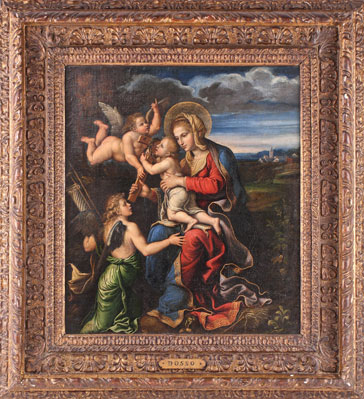How can you tell if a painting is rare?
Exploring the factors that determine the rarity of paintings
30/03/2023
When it comes to determining if a painting is rare, it is worth noting that it won’t necessarily mean it is more valuable. Afterall any aspiring artist could produce a painting and it may even be “one of a kind” and therefore rare, but unless that painting has been created by a recognised artist whose work is sought after, it is highly unlikely to have any significant value. Of course, when we talk about a painting or print in terms of rarity, we are exploring established artists and works that are historically in demand.
A Rare Renaissance painting discovered in a north London bungalow
When seeking to determine rarity, it is worth noting that artists started signing their works around the 15th century, so establishing who painted a piece is a good starting place. Use a magnifying glass to inspect the canvas for signs of a signature, monogram and/or numbers. While doing this, look closely at the brush strokes. If you can’t see any, you are likely to be looking at a print. Don’t be disheartened if you have a print, as some prints can still be valuable or limited editions. Indeed, works in print by L.S. Lowry for instance are in high demand, and sell for extremely strong prices when they go under the hammer at auction.
Read more: Are Lowry Prints Valuable?
When there is glass covering the picture, you may be looking at a watercolour, tiny dots of colour under closer inspection might suggest a print. If you can find a signature of sorts, there are many online tools available that you can use to compare the signature and ascertain who painted the work in question. The artist could be well known, but if they died prematurely and only produced a limited number of paintings, this makes their works rarer. If the work is unsigned, don’t give up hope.
Contemplate the subject of the painting, the recent discovery of what many believe to be a long-lost Caravaggio painting from 1607, depicts a biblical scene in a “baroque” style, which is a term used to group a number of works produced in Europe in the 17th century. This unsigned painting was discovered hidden in an attic and expected to fetch up to £128 million at auction!

A Long-lost Caravaggio painting found in an attic
Study the back of the canvas for any writing or labels. This can provide valuable information about previous owners, exhibitors, sales and sometimes an artist’s signature. Often the name of the painting is located here and even more uncommon is another painting to the reverse of the canvas. A lack of information in this area could potentially mean the work has largely been unseen in the marketplace, which makes it scarcer. However, it is also worth noting that it could be a red flag, and in fact the piece is a modern copy or reproduction.
Frames can often offer a clue as to the age of a painting. Look out for elaborate, ornate and gilded borders. However, it is important to note that one should never remove a frame if you do not know exactly what you are doing. You can seriously devalue the painting and even possibly cause damage. The material used as a “canvas”, can also give an indication of age. In the 17th century blocks, canvases and even copper were popular.
Ultimately, the best way to determine if a painting is rare, would be to consult with an expert. A specialist will be able to provide information using their experienced eye and knowledge.
Read more...
Can paintings by unknown artists be valuable?
Do you have a potentially rare painting that you are thinking of selling?
Our friendly team of specialists are on hand to provide advice and can provide a free auction estimate.
Please do get in touch, we would love to hear from you:
